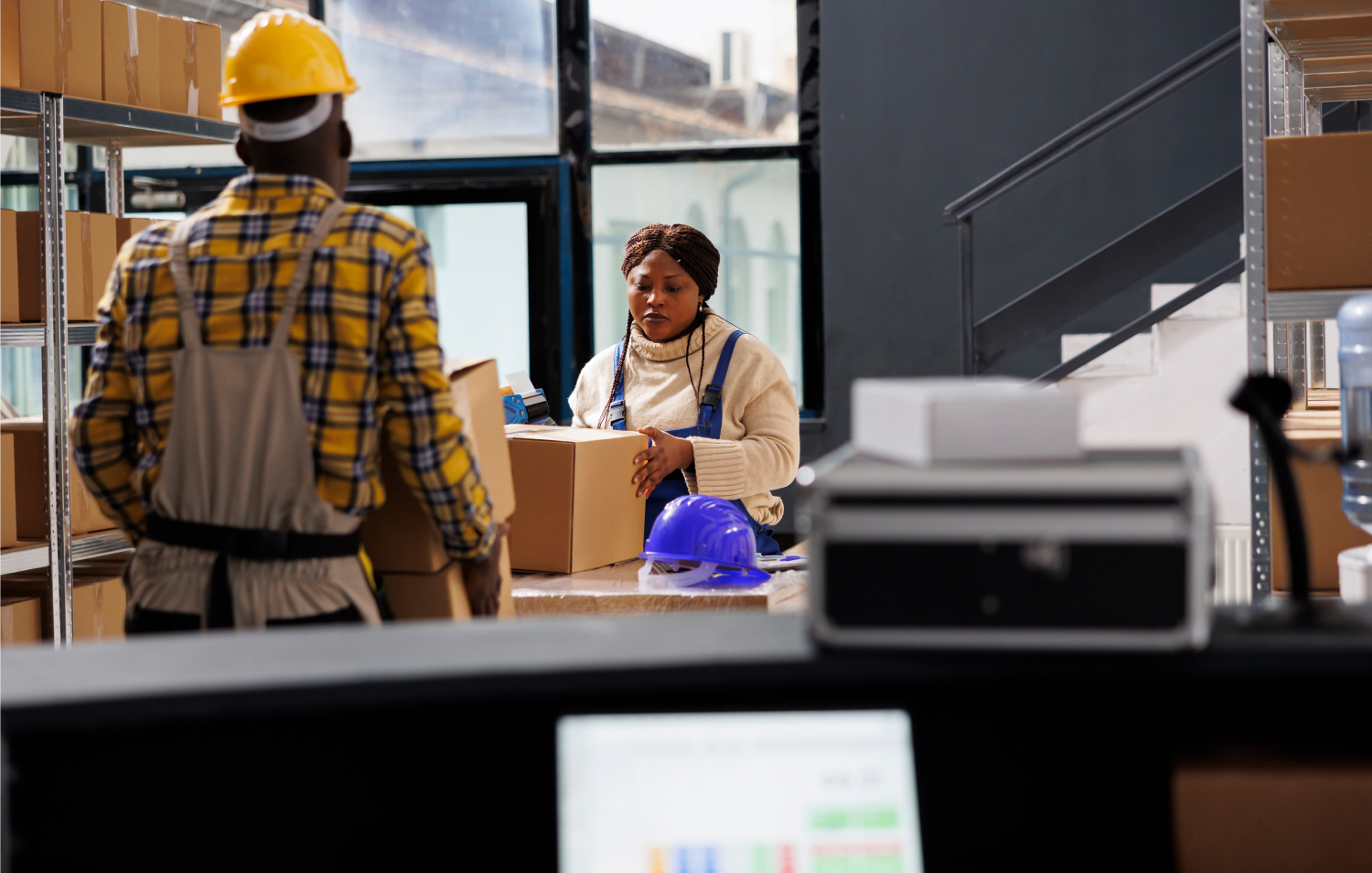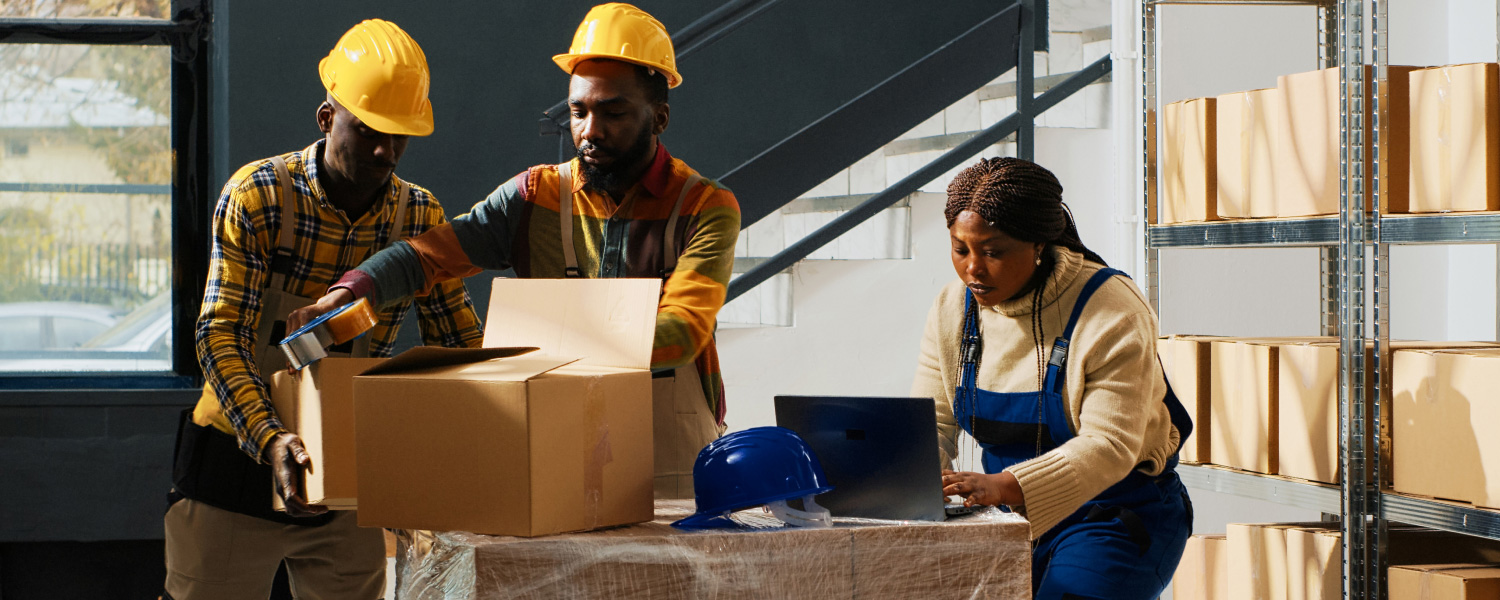Imagine your customer eagerly waiting for their package, only to be disappointed by a mishap at the last mile delivery station.
Studies show that 84% of consumers would think twice before shopping again with a retailer after such an experience.
The final step of the journey, the last mile delivery station, can make or break your customer’s experience.
It’s not just about getting the package to the doorstep; it’s about ensuring it’s done efficiently and seamlessly.
When the last mile delivery falters, it reflects poorly on the entire operation. But there’s good news.
By optimizing your final delivery station with a robust Warehouse Management System (WMS), you can turn things around.
This isn’t just about logistics; it’s about building trust and loyalty.
Keep reading to find out how optimizing your last mile delivery station with the help of a WMS can make all the difference.
What is Last Mile Delivery?
Wondering what is last mile delivery? It’s the final step in the delivery process, where a package reaches the customer’s doorstep.
You’ve ordered something online, eagerly tracked it, and finally, the day arrives.
That moment when your package is delivered is the last mile delivery in action. This phase is important because it directly impacts the customer’s experience.
A smooth and timely delivery can make all the difference in how a customer views a retailer, while a frustrating delay can tarnish their perception.
So, the last mile delivery service is about making the final leg of the journey efficient and satisfying.
It’s the part of the logistics chain that ensures packages arrive as expected, contributing to customer satisfaction and loyalty.
Whether it’s a one-time purchase or repeat business, the quality of last mile delivery service plays a pivotal role in building trust and a positive reputation for the retailer.
Last Mile Delivery Challenges
Last-mile delivery is the crucial final step that gets a package to your customer’s doorstep.
Think about the excitement of waiting for your online purchase to arrive; that’s what makes this stage so important.
This step is vital because it directly shapes the customer’s perception of the service.
In fact, 90% of consumers consider two- to three-day delivery as the norm, while 30% anticipate same-day delivery
Let’s look at some of the challenges faced in last-mile delivery.
1. Traffic Congestion
One of the biggest challenges in last-mile delivery is navigating urban traffic congestion.
Delivery vehicles often face delays due to heavy traffic, road construction, and other unexpected obstacles.
This can lead to late deliveries and increased fuel costs, ultimately impacting customer satisfaction and the overall efficiency of the delivery process.
2. High Delivery Costs
The final leg of delivery is often the most expensive part of the logistics chain.
High delivery costs are driven by various factors, including fuel prices, vehicle maintenance, and the need for a larger workforce to handle multiple deliveries over a wide area.
These costs can eat into profit margins and make it challenging for retailers to offer competitive pricing or free delivery options.
3. Address Accuracy and Accessibility
Ensuring accurate delivery addresses and navigating to them efficiently is another significant challenge.
Incorrect or incomplete addresses can lead to failed delivery attempts, which increase operational costs and delay the delivery process.
Also, delivering to hard-to-reach locations, such as high-rise buildings or remote areas, can pose logistical challenges and require additional time and resources.
Addressing Last Mile Delivery Challenges With a WMS

1. Start Optimizing Routes
Routes and distances are critical factors that significantly impact last-mile delivery costs.
The greater the distance, the higher the expense, making route optimization essential for companies aiming to reduce costs.
- To tackle this, brands can adopt warehouse management software as it provides real-time information on traffic conditions, weather changes, vehicle capacity, and delivery schedules. By using this data, drivers can plan the most efficient routes, reducing both travel time and fuel consumption.
- Also, map features that convert customer addresses into precise geographic coordinates enhance delivery accuracy and minimize route planning errors.
- Brands can further optimize routes by evenly distributing delivery tasks among drivers using load balancing strategies.
Route optimization prevents delays and bottlenecks, ensuring timely deliveries and efficient resource utilization.
2. Automate Inventory Management
Think about the last time you ordered something online and eagerly tracked its progress.
Behind the scenes, a WMS plays a crucial role in ensuring your package gets to you smoothly with inventory automation.
Here’s how it is done:
- As items are picked, packed, and sent out for delivery, the WMS keeps track of inventory.
- It monitors products still in the warehouse, those out for delivery, and even items returning to the warehouse.
This seamless inventory management means that the driver knows exactly what’s on their truck and which items belong to each order.
With all the necessary information at their fingertips, drivers can make deliveries efficiently and accurately. It’s all about having the right system in place to keep things running like clockwork.
Want to see how this works in action? Sign up for a demo with Teamship to see how our WMS automates inventory management and speeds up your last mile delivery.
3. Ensure Load Balancing
Wondering how to keep delivery delays at bay and make sure every driver is pulling their weight? Here’s how a last mile delivery solution can help:
- Optimize Task Distribution: WMS can optimize the distribution of delivery tasks among drivers using load balancing strategies. This prevents bottlenecks and ensures even workload distribution.
- Achieve Balanced Workloads: Picture a team where every driver has a balanced load, leading to efficient deliveries and less stress for your workforce.
- Enhance Efficiency and Morale: Implementing load balancing not only enhances overall delivery efficiency but also boosts employee morale by preventing overburdening.
By using these tips, you can ensure timely deliveries and maintain a happy, productive team.
4. Get Real-Time Updates
Imagine a driver receiving an alert about a traffic jam and instantly rerouting to avoid it.
A WMS provides real-time updates on delivery status, traffic conditions, and potential delays.
With Teamship’s WMS, your team is always in the loop. How?
- Equip your drivers with mobile devices that enable last mile delivery tracking, allowing them to adjust routes and schedules on the go.
- Regularly review and analyze these updates to identify patterns and make proactive adjustments to your delivery strategies, ensuring smoother operations and happier customers.
Get real-time updates with last mile delivery tracking and watch your delivery process improve.
5. Enhance Customer Experience
How can you ensure your customers are always satisfied with their deliveries?
Customer satisfaction is important because 97% of consumers and 98% of managers agree that customer experience influences whether customers remain loyal to a brand.
By ensuring accurate and timely deliveries, a WMS significantly enhances the customer experience.
Learn how to improve your customer’s delivery experience with last mile delivery software:
- Use the data from your WMS to communicate accurate delivery times to customers and provide them with tracking capabilities.
- Implement customer feedback loops to continuously improve your delivery process.
- Regularly review delivery performance metrics to identify areas for improvement and ensure high levels of customer loyalty and repeat business.
Think about the relief customers feel when they can track their package in real-time and receive it exactly when expected.
Make this happen with a last mile delivery solution today!
Last Mile Delivery Made Easy with Teamship
When it comes to last mile delivery, every detail counts.
It’s the final step in getting your products into your customers’ hands, and it can make or break their experience with your brand.
That’s where Teamship comes in, your ultimate partner in optimizing last mile delivery.
Why Choose Teamship?
- Real-Time Updates
With Teamship, your team is always in the loop.
Our WMS for brands keeps you informed with up-to-the-minute delivery status, traffic updates, and alerts for any potential delays.
This allows your drivers to reroute instantly, sidestep traffic congestion, and maintain on-time deliveries.
- Optimized Routes
Teamship uses advanced algorithms to plan the most efficient delivery routes.
Route optimization not only reduces travel time and fuel consumption but also helps you meet those tight delivery windows that keep your customers happy.
- Happy Drivers, Happier Customers
Happy drivers lead to happy customers.
By ensuring quick and efficient deliveries, Teamship helps you build trust and loyalty with your customers.
Our system even allows customers to track their packages in real-time, adding an extra layer of satisfaction.
Get Set to Supercharge your Last Mile Delivery
Thinking it’s time to upgrade to your last mile delivery? Teamship’s WMS has got you covered.
No more delivery hassles, just efficient, dependable service. Try Teamship today and see the difference for yourself!
Final Thoughts
Want to take the hassle out of last mile delivery?
By optimizing your processes, you can ensure timely deliveries, happy drivers, and satisfied customers.
Here’s to making every delivery a win!
Frequently Asked Questions
1. What are the top last mile delivery companies?
Some of the top last mile delivery companies include Amazon Logistics, UPS, FedEx, DHL, and Postmates.
These last mile delivery companies are known for their efficiency, reliability, and innovative delivery solutions.
2. How long does the final mile delivery take?
Final mile delivery typically takes 1 to 2 days.
However, the exact time can vary: some deliveries might be completed in just a few minutes, while others could take several business days.
3. What is the last-mile delivery risk?
As you approach the final delivery destination, the number of deliveries within that area decreases, especially in remote locations.
This increases safety risks for drivers, who may have to navigate deserted roads and reach isolated houses, potentially putting their personal safety at risk.

